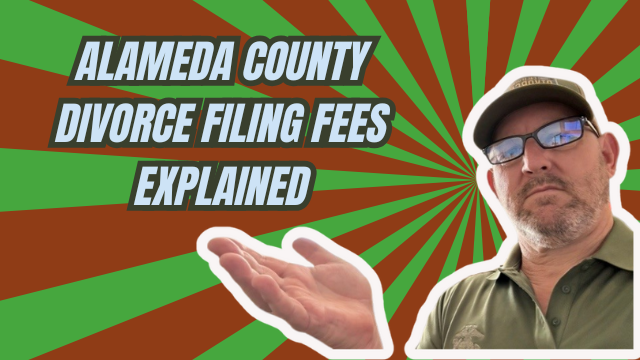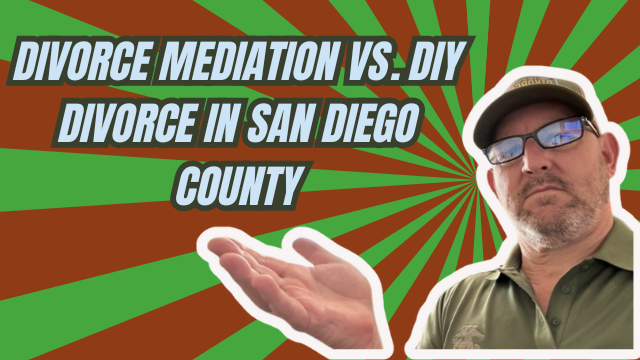How to Serve Divorce Papers in Alameda County | Alameda Divorce
Introduction
I’m Tim Blankenship with Divorce661. If you’ve just filed for divorce in Alameda County, congratulations on taking the first step — but don’t let the process stall. One critical requirement that many people miss is serving your spouse with the divorce papers. This is a legal step the court requires before your case can proceed. Below I’ll walk you through exactly how to serve divorce papers in Alameda County, the options available, common mistakes to avoid, and how we can help make this step simple and fast.
Why Proper Service Matters
Service of process lets the court know your spouse has received notice of the case. Without proper service, the court cannot move forward — and important timelines (like the six‑month waiting period in California) do not start. People sometimes assume the court will serve the papers for them; it won’t. It’s your responsibility to ensure service is completed correctly and the proof is filed with the court.
Who Can Serve the Papers?
California law requires that the person who serves your spouse must:
- Be at least 18 years old, and
- Not be a party to the case (so not you).
That means a friend, family member (over 18), a professional process server, or in some situations the sheriff can do the service.
Two Main Ways to Serve in Alameda County
1. Notice and Acknowledgment of Receipt (Recommended when possible)
If your spouse is cooperative, the easiest and quickest method is to have them sign a Notice and Acknowledgment of Receipt. This avoids personal service entirely. The spouse signs to confirm they received the petition and summons, you file the signed form with the court, and your case can proceed.
Benefits:
- Faster and less expensive than hiring a process server
- Creates a clear paper trail for the court
- Avoids the hassle of tracking down or confronting your spouse
2. Personal Service (When the other party won’t cooperate)
If your spouse refuses to sign an acknowledgment or is not reachable, you’ll need personal service. A process server or sheriff physically hands the documents to your spouse and completes a Proof of Service form. That proof must then be filed with the court.
Key points about personal service:
- The server completes and signs a Proof of Service that describes where, when, and how the papers were delivered.
- If your spouse attempts to evade service, a process server has strategies to handle that; if service cannot be completed, there are alternative methods (like service by mail with a signed acknowledgment, substituted service, or service by publication) but those have stricter rules.
Common Mistakes to Avoid
- Assuming the court will serve the papers — it won’t. It’s your responsibility.
- Having a party to the case serve the papers — the server must be neutral and over 18.
- Failing to file the proof of service or the signed acknowledgment — without the filed proof, the court has no record that service occurred.
- Waiting too long — delays in service can delay your entire case and put deadlines off track (for example, the six‑month waiting period won’t start until proper service is filed).
Real Client Example
We recently helped a client in Alameda County who had waited months thinking the court would serve their spouse. Because service had not been completed, their six‑month waiting period never started. We stepped in, arranged personal service within two days, filed the correct paperwork, and got the case moving immediately. That kind of delay can be avoided with the right guidance from the start.
How Divorce661 Can Help
At Divorce661 we guide you through every step of the service process. Our services include:
- Explaining your service options and which is best for your situation
- Providing the correct forms (Notice and Acknowledgment, Proof of Service, etc.)
- Referrals to reliable process servers or assistance coordinating sheriff service
- Filing the proof with the court so your timelines can begin
We offer flat‑fee divorce services, clear instructions, and support to keep your case on track without unnecessary delays.
Steps to Serve Divorce Papers in Alameda County — Quick Checklist
- File your initial forms (petition and summons) through the court’s e‑filing system.
- Decide how you will serve: Notice & Acknowledgment (if spouse cooperative) or personal service (if not).
- If using Notice & Acknowledgment: have the spouse sign and file the form with the court.
- If using personal service: arrange a neutral server (process server or sheriff) and file the Proof of Service after delivery.
- Confirm the court has received and filed your proof; this starts the statutory timelines.
Conclusion and Next Steps
Serving divorce papers correctly in Alameda County is a small step with big consequences. Do it right the first time to avoid unnecessary delays. If you need help figuring out the best way to serve your spouse, want the forms prepared, or need us to arrange service, visit Divorce661.com to schedule a free consultation. We’ll handle the details so you can move forward with confidence.
Tim Blankenship, Divorce661










